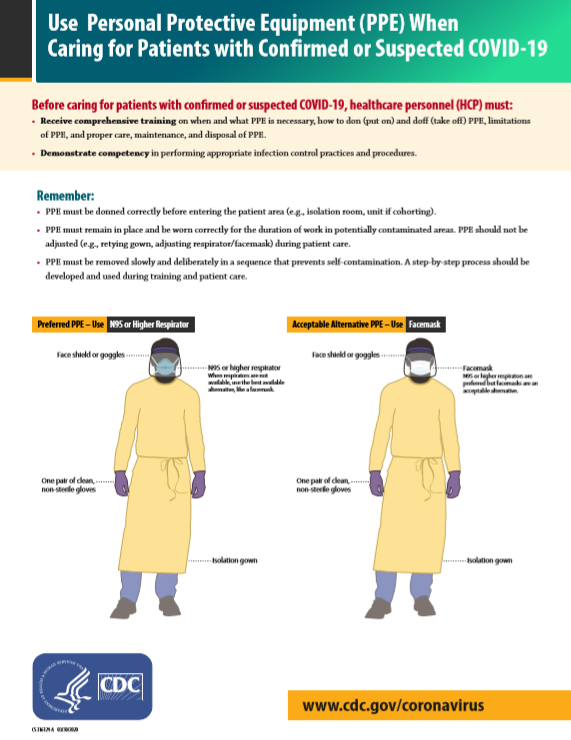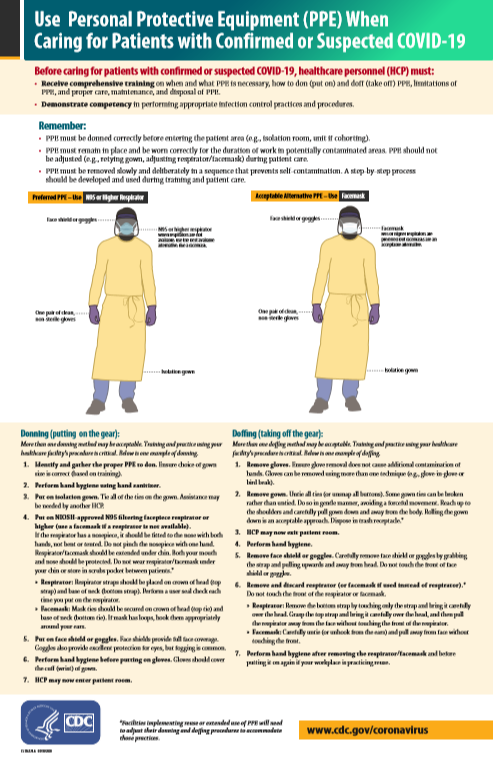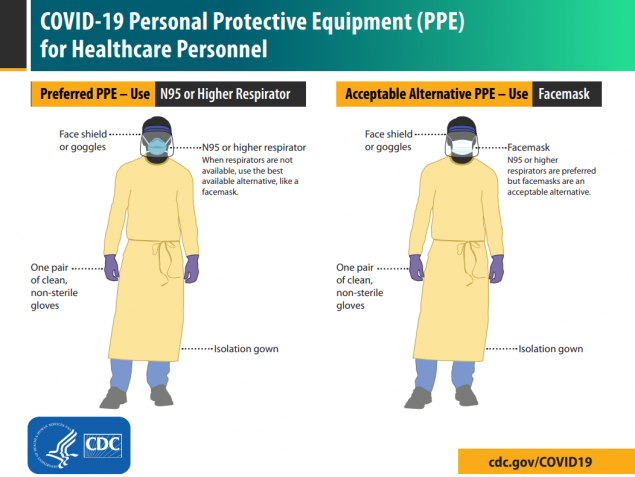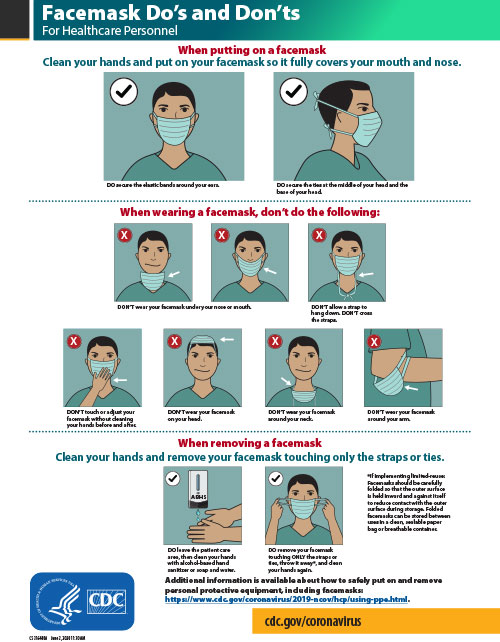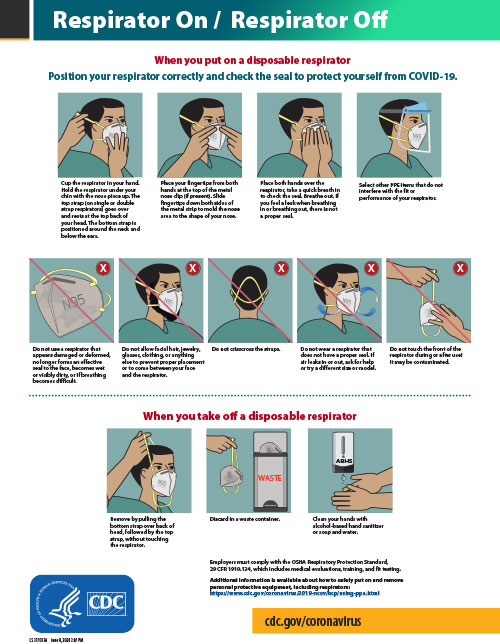ARCHIVED WEBPAGE: This web page is available for historical purposes. CDC is no longer updating this web page and it may not reflect CDC's current COVID-19 guidance. For the latest information, visit CDC's COVID-19 home page.
Aquatics FAQs
Recommendations for Fully Vaccinated People
COVID-19 Homepage
Using Personal Protective Equipment (PPE)
Find the Latest Information:
Summary of Recent Changes
Who Needs PPE
check circle solid icon Patients with confirmed or possible SARS-CoV-2 infection should wear a facemask when being evaluated medically
check circle solid icon Healthcare personnel should adhere to Standard and Transmission-based Precautions when caring for patients with SARS-CoV-2 infection. Recommended PPE is described in the Infection Control Guidance
U.S. Healthcare Facilities: Optimize the Supply of PPE and Equipment
How to Put On (Don) PPE Gear
More than one donning method may be acceptable. Training and practice using your healthcare facility’s procedure is critical. Below is one example of donning.
- Identify and gather the proper PPE to don. Ensure choice of gown size is correct (based on training).
- Perform hand hygiene using hand sanitizer.
- Put on isolation gown. Tie all of the ties on the gown. Assistance may be needed by other healthcare personnel.
- Put on NIOSH-approved N95 filtering facepiece respirator or higher (use a facemask if a respirator is not available). If the respirator has a nosepiece, it should be fitted to the nose with both hands, not bent or tented. Do not pinch the nosepiece with one hand. Respirator/facemask should be extended under chin. Both your mouth and nose should be protected. Do not wear respirator/facemask under your chin or store in scrubs pocket between patients.*
- Respirator: Respirator straps should be placed on crown of head (top strap) and base of neck (bottom strap). Perform a user seal check each time you put on the respirator.
- Facemask: Mask ties should be secured on crown of head (top tie) and base of neck (bottom tie). If mask has loops, hook them appropriately around your ears.
- Put on face shield or goggles. When wearing an N95 respirator or half facepiece elastomeric respirator, select the proper eye protection to ensure that the respirator does not interfere with the correct positioning of the eye protection, and the eye protection does not affect the fit or seal of the respirator. Face shields provide full face coverage. Goggles also provide excellent protection for eyes, but fogging is common.
- Put on gloves. Gloves should cover the cuff (wrist) of gown.
- Healthcare personnel may now enter patient room.
How to Take Off (Doff) PPE Gear
More than one doffing method may be acceptable. Training and practice using your healthcare facility’s procedure is critical. Below is one example of doffing.
- Remove gloves. Ensure glove removal does not cause additional contamination of hands. Gloves can be removed using more than one technique (e.g., glove-in-glove or bird beak).
- Remove gown. Untie all ties (or unsnap all buttons). Some gown ties can be broken rather than untied. Do so in gentle manner, avoiding a forceful movement. Reach up to the shoulders and carefully pull gown down and away from the body. Rolling the gown down is an acceptable approach. Dispose in trash receptacle. *
- Healthcare personnel may now exit patient room.
- Perform hand hygiene.
- Remove face shield or goggles. Carefully remove face shield or goggles by grabbing the strap and pulling upwards and away from head. Do not touch the front of face shield or goggles.
- Remove and discard respirator (or facemask if used instead of respirator). Do not touch the front of the respirator or facemask.*
- Respirator: Remove the bottom strap by touching only the strap and bring it carefully over the head. Grasp the top strap and bring it carefully over the head, and then pull the respirator away from the face without touching the front of the respirator.
- Facemask: Carefully untie (or unhook from the ears) and pull away from face without touching the front.
- Perform hand hygiene after removing the respirator/facemask and before putting it on again if your workplace is practicing reuse.*
* Facilities implementing reuse or extended use of PPE will need to adjust their donning and doffing procedures to accommodate those practices.
